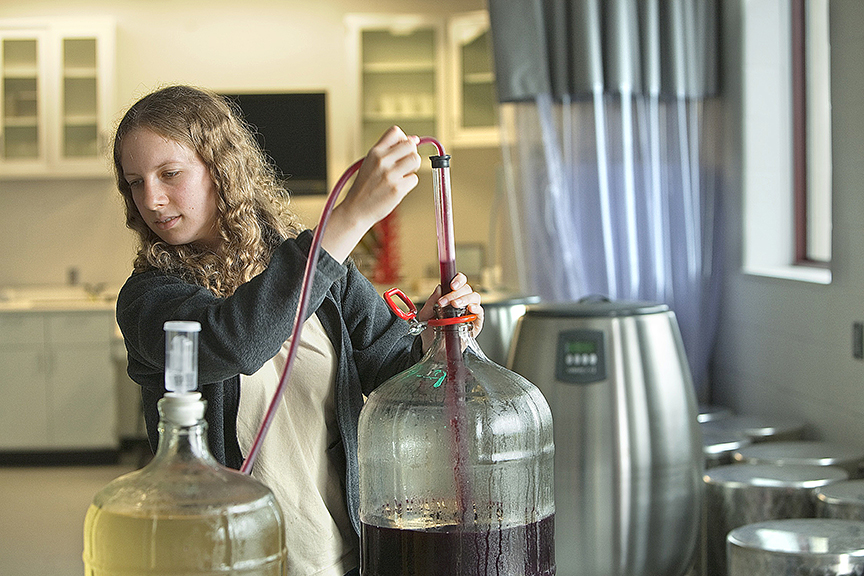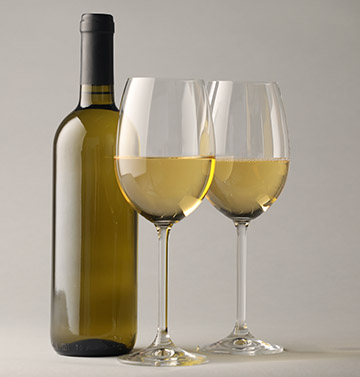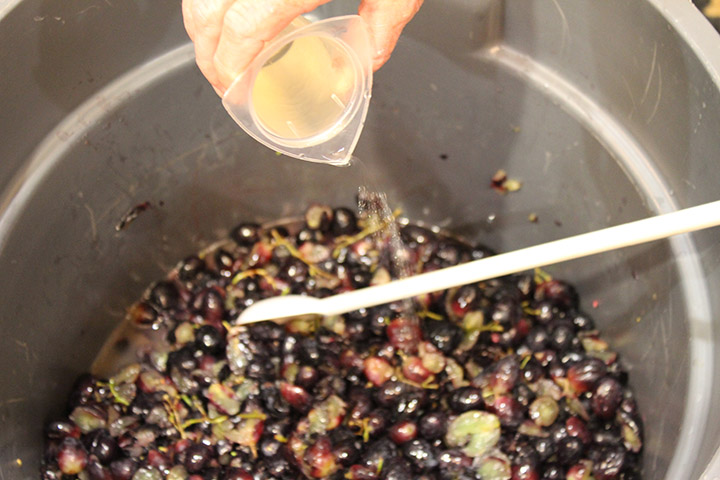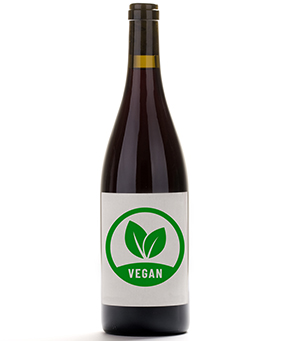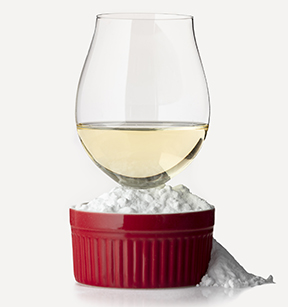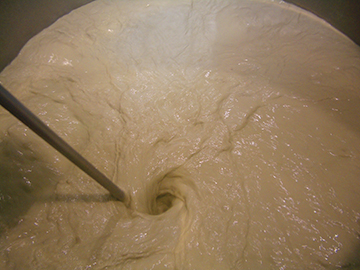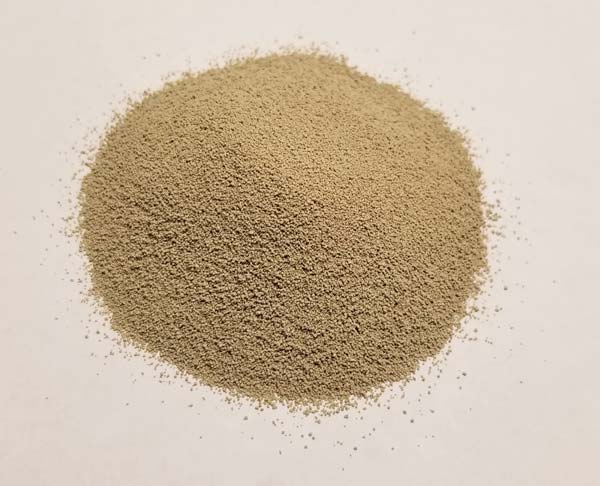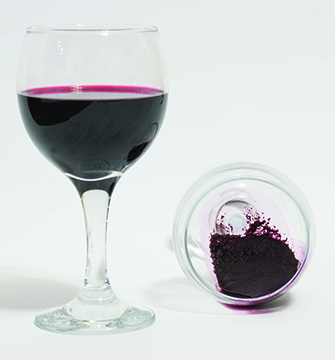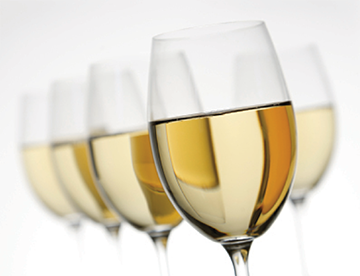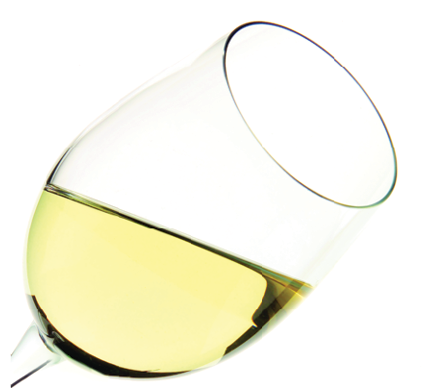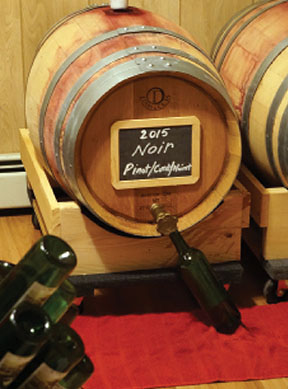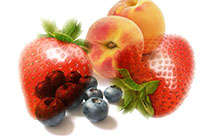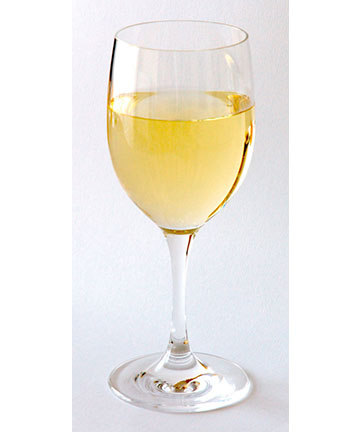Topic: Clarity-and-Filtration
Turbidity
Clarity, or turbidity, is a key aspect of wine evaluation. Let’s revisit the fundamentals of wine clarity and examine how incorporating turbidity analysis and control into your process can help you bottle with confidence, knowing your wine will remain stable.
Racking Wine
Racking — the action of transferring wine off the lees to another vessel — is an important technique that is required to produce clear finished wine. Learn more about when and why racking is important, as well as ways to accomplish it that depend on the volume of wine you are making.
Cold stabilization
Cold stability is one of those topics that sounds simple on the surface but gets tricky once you look at the details. What we’re trying to prevent is the formation of tartrate
Wine Filtration
Filtering isn’t glamorous, but it is often a necessary step toward brilliantly clear and microbially stable wine in the bottle. Learn the options home winemakers have when it comes to filtration, from plate to cartridge filters and various size pads, each has its own purpose.
Pectic Enzymes
Pectic enzymes are often used in fruit and other high-pectin wines to aid in clarity, but also serve as a useful tool post-crush to aid in juice, color, and aroma extraction for many grape wines.
Vegan Winemaking Products
Manufacturers have recently released many plant-based or microbial-sourced products. Learn about these products, even if vegan isn’t your primary goal.
Chitosan: For more than just fining
Chitosan is a product every home winemaker should be familiar with, and likely has around their cellar. It is used to help clarify wine, but its benefits go well beyond that. Newer chitosan-based products are also beneficial for microbial stability as well as malolactic and acetic bacteria suppression.
It’s All Fine and Good
There are many different types of fining agents available to home winemakers that fall into these four groupings: Mineral, polysaccharide, synthetic polymer, and protein agents. Learn what each is best used for and when you may be better to employ one vs. another.
Is chitosan safe for those with shellfish allergies?
Though I’m no medical doctor (and certainly don’t play one on TV), from what research I was able to pull together, if I personally had a shellfish allergy I would feel comfortable
Dealing With Haze
While haze can sometimes just be aesthetically off-putting and not a true flaw, it’s something many winemakers like to avoid. Get the scoop on reducing haze and other benefits, as well as drawbacks, that come with the use of fining agents.
Rules Of Fining
Indeed, after using most fining agents there will be a layer of sediment generated and you’ll need to rack the wine off of it accordingly. Fining agents, by definition, are introduced into
Fine wine
The goal for experienced and new winemakers alike is a product that is both pleasant in taste and appearance. Unfortunately for many new winemakers the result is stubborn cloudiness with sediment, or
Get Crystal Clear About Filtration
If you want to serve a crystal clear and microbial stable wine, it will require filtration. Explore the “how” and “why” of wine filtration, along with the equipment needed to do it.
Fin(d)ing Clarity in the Five S’s
When it comes to clarifying your wine kit, there are five “S’s” that will guide your way: Start, stir, smash, sweep, and suppress.
Fining Red Wines
Red wines are typically not fined as often as white wines, to which we often add bentonite in order to remove potentially haze-causing proteins. The tannin from the skins of red wines
Natural Fining For White and Rosé Wines
Well, an old-timer winemaker I used to work with would say, “The most natural fining agent for any wine is time.” What he meant was that with time, solids fall out, proteins
Mellowing a Big Wine
Even my “purist” winemaking friends usually aren’t opposed to doing a little egg white fining when it comes to smoothing out the rough edges on their big reds. It’s an ancient and
Fun With Wine Filtration
The fun of filtration! I’ll deliver the bad news to you and my readers first by telling you that really no matter how tight of a pore size you use to filter
Fining Your Way to Clear Wine
Fining of wine is the addition of one substance to remove another. It is a diverse subject with several classes of materials involved in its use and lots of different intended outcomes.
Year in a Life of a Wine Part V (Cellar Work)
In the fifth installment of our year-long series about how homemade wine is made using home-grown grapes in Upstate New York, the wines are put through malolactic fermentation and cold stabilized.
Understanding Bentonite
Wine, as I’ve often written, is a complex chimerical soup. Wine naturally contains lots of different amino acids and some of those amino acids are in long-chain form and actually are proteins.
Year in a Life of a Wine Part VI (Bulk Aging and Bottling)
In the final installment of our year-long series, the wines are bulk aged, oaked, and bottled.
Using Enzymes in Country Wines
Country fruit wines can be quite difficult to achieve the desired color, aroma, and clarity levels. Here is a look at the various enzymes typically used in grape winemaking that can also be used in fruit wines.
Fining for Beginners
Learn the ins and outs of fining wine and the options to choose from.
Clearing A 23-Year-Old Concord Wine
Since 1992 (over 20 years) is quite a long time to store bottled wine. If you go to a supermarket or liquor store, you’ll notice that most red wines currently on the

